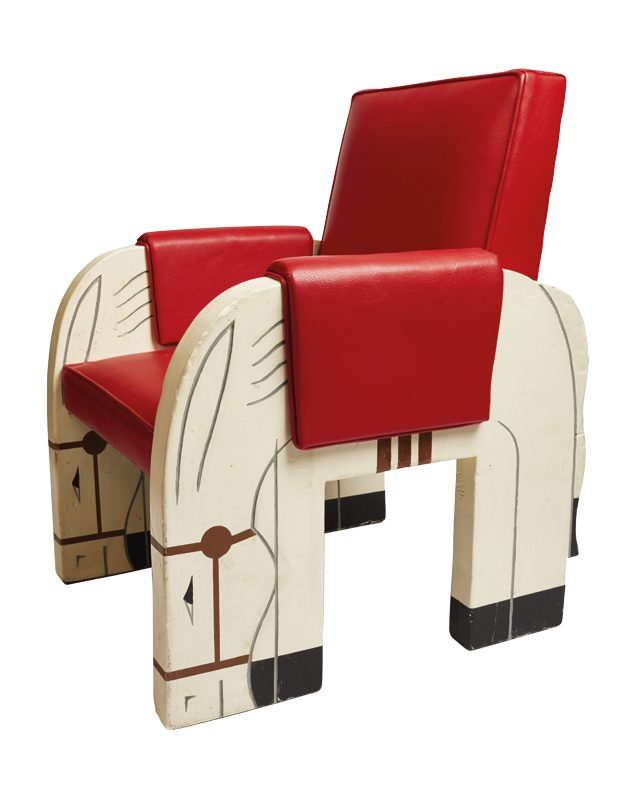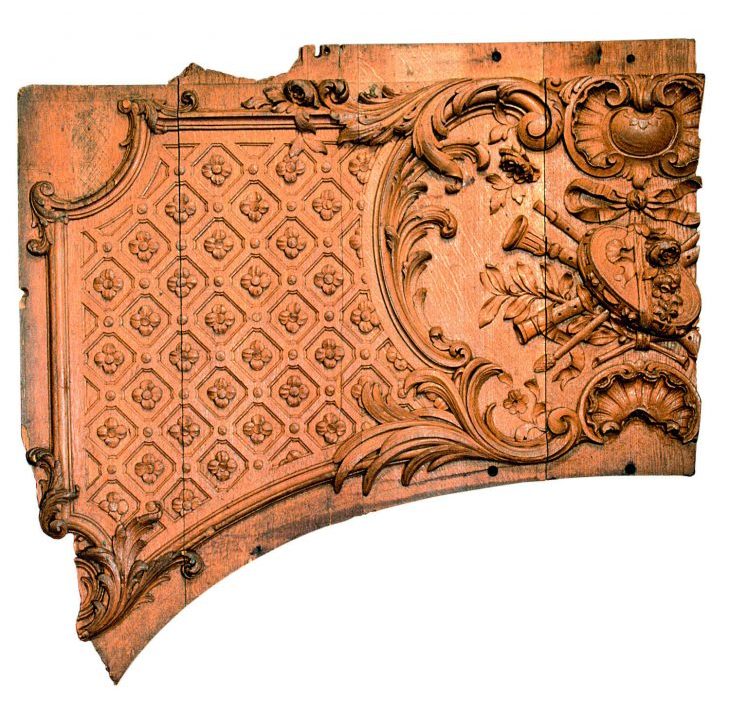‘Ocean Liners: Speed and Style’ is at once an exhibition, period vignette, and voyeuristic experience. Grand de luxe and romance are the key ingredients of this enjoyable celebration of the heyday of the ocean liner, from Brunel’s Great Eastern to the birth of the leviathans that now dominate the harbours of Miami and Fort Lauderdale and cause so much damage to the fabric of Venice.
For many the sea is an irresistible magnet. Some like it rough and tough, but for others it is a dream of suspended reality, with first-class service, sunshine, deck-loungers, bellboys, dance bands and champagne. That is the illusion conjured up as one enters the exhibition to be greeted by a giant model of the Queen Elizabeth (1:48 scale), crafted by Bassett-Lowke for Cunard’s palatial New York offices. It was billed as the largest model ever made. This, and the abundance of posters for Cunard, the Red Star Line, Messageries Maritimes, the Orient Line, individual ships such as the Empress of Britain and others demonstrate the lengths to which shipping companies went in order to sell their dreams to a receptive public.
Empress of Britain poster for Canadian Pacific Railways (c. 1920–31), designed by J.R. Toby. © Victoria and Albert Museum, London

Robert Dudley’s Tissotesque From Sheerness to Valentia, the earliest work in the exhibition, represents a pivotal moment in sea travel; painted in 1868 it shows elegant ladies and behatted gentlemen on the deck of the Great Eastern, amid the maritime clutter, a reminder that she was a working ship, whose prime task was the laying of transatlantic ables. From the mundane, one is transported to the world of mythology and the comfort of a gentleman’s club with tile panels by William De Morgan and a Wagnerian allegory of flag-waving nymphs, Unsere Zukunft liegt auf dem Wasser (Our Future Lies upon the Water) by Arthur Fitger, in an elaborate frame complete with putti and imperial eagle. Here are also reassuring drawings of panelling by those masters of grand-hotel design, Mewès and Davis, and Charles Wilson’s carved, painted and gilded panel Honour and Glory Crowning Time from the grand staircase of the Olympic, conjuring up an image of oppressive respectability, as though Edwardian ship-owners and designers wished to reassure passengers that they were perfectly safe and didn’t even need to see the sea. Ironically an identical panel by Wilson adorned the ill-fated Titanic. This all changed after the First World War.
Tile panel for the saloon on the Sutlej (c. 1882), William de Morgan. © Victoria and Albert Museum, London

The 1930s, with the emergence of the flapper and the evolution of le style moderne, witnessed the heyday of the great liners with France leading the field. The battle of the styles presented here – French for chic, British for comfort, German for propaganda, and Italian for a progressive mix of old and new – was conducted in a very public way on the high seas. Ghislaine Wood, co-curator of the exhibition, writes in her essay ‘Inter-War Liners: The Politics of Style’, in the lavish accompanying book: ‘As nations continued to compete for the coveted Blue Riband (and national subsidies continued to underwrite their construction) ocean-liner design became a matter of national prestige and an arena in which the larger dynamics of global competition and the decline of empire were played out.’
Wood also notes that in the early 1930s it was the German ships Bremen and Europa that ‘did much to promote Modernist streamlining in liner design and spurred competition between the European nations’. The Normandie, launched in 1935, was the clear winner in these stakes. She was the most elegant liner of all time, complete with swimming pool, winter garden and aviary. Her luxurious fittings are well preserved, as she was stripped prior to being requisitioned by the Americans for war service, and here we have one of Jean Dunand’s gilded lacquered panels depicting semi-naked athletes from the first-class smoking room, an easy chair upholstered in Aubusson tapestry, and ceramics, glass and cutlery designed by Lalique, Puiforcat and Christofle.
Although in the 1930s it was the transatlantic route that inspired the most intense competition, in post-war Britain Sir Colin Anderson, chairman of the Orient Line, picked up the baton of style, commissioning Brian O’Rorke to design modernist interiors for the Orcades and Oronsay, with murals, textiles, and china by Edward Bawden, whose ‘Heartsease’-pattern Wedgwood muffin dish provides a homely contrast to the glitz of Christofle and Puiforcat. Edward Ardizzone painted a delightful nursery mural for P&O’s Canberra, here shown alongside the ‘horse’ child’s chair designed by Marc Simon and Jacqueline Duché for the Normandie’s first-class playroom.
Children’s chair from the Normandie (c. 1934), designed by Marc Simon and Jacqueline Duché © Miottel Museum, Berkeley, California

The emphasis of the exhibition is on above-decks glamour, but the visitor also gets a glimpse – particularly through Stanley Spencer’s vast canvas Shipbuilding on the Clyde: Riveters (1941) – of what John Hume describes in another catalogue essay as ‘the vast endeavour of shipbuilding and design’. However, what the great shipping tycoons wanted their clientele to see was craft not graft.
With the ingenuity of the original ocean-liner designers the curators have exploited the possibilities of illusionism and modern technology to recreate the shipboard experience with overtones of the theme tune to Desert Island Discs; gentle marine sounds waft through the galleries mingling with the cry of seagulls. At one point they have created the illusion of being on deck with limitless vistas of blue sea, animated only by the occasional sighting of the Olympic, Normandie or QE2 as they sail by on the horizon.
Fragment of a panel from the first-class lounge of Titanic (c. 1911). © Maritime Museum of the Atlantic, Halifax, Nova Scotia, Canada

This is a prelude to the coup de théâtre as the visitor enters the largest space where, under a star-spangled dome, and to 1930s dance music, figures disport themselves in a swimming pool, while elegant ladies descend and ascend the central stairs. This is the setting for the display of ostentation and fashion set against a sparkling background crystal and aluminium panel created by Charles Tissot for the SS United States. Here we find riches from the Normandie, the Duke of Windsor’s travelling trunks, a Cartier platinum and diamond tiara saved from the Lusitania, a rich scarlet silk-crêpe dress by Lelong worn on the Normandie’s maiden voyage and, of course, knitted bathing suits for both men and women.
‘Ocean Liners: Speed and Style’ is at the Victoria and Albert Museum, London, until 10 June.
From the March issue of Apollo. Preview and subscribe here.



